Conservation - Tumblr Posts
Both of my parents have worked for several aquariums and while my mum no longer does, my dad is pretty high up in the management structure for a zoo. Lemme tell you, our zoo is not only a wonderful institution that deeply cares for all of its inhabitants, we have:
an incredible elephant conservation program, including an entire converted ranch a ways into the center of the state specifically to allow the elephants some vacation free-range time;
two lovely northern elephant seals who were rescued and rehabilitated by the staff, one of whom (Coolio, i love that boy!) cannot be released due to severe eye injury;
a vitally important sea turtle rehab program which just last year released two kemp’s ridleys, a critically endangered species;
three white-bellied pangolins as part of an absolutely essential conservation program to protect this critically endangered species from going extinct
and probably some other stuff i can’t remember right now.
(also, our gorilla exhibit is AMAAAZIIIING!!! so much SPACE and lots of stuff for them to play around with!)
i don't really understand why you would be pro-zoo. like i understand nature reserves and sanctuaries where people can observe from afar, but it doesn't seem right to me when they're locked up in generally small confined areas for people to watch them do nothing all day. idk maybe i'm getting this wrong, and i still really respect you, i just don't understand this. like i interned at a zoo and felt uncomfortable with how small their living areas were and how they had no stimulation
Zoos don’t look like this anymore.

They look like this:





Good zoos do not keep their animals in “tiny spaces” with no enrichment. I’m not pro-roadside zoo. I’m pro-accredited zoo. Zoos are incredibly important for conservation and education.
Are Zoos Necessary?
The Importance of Zoos: Resource Post
Why Zoos and Aquariums Matter: Assessing the Impact of a Visit to a Zoo or Aquarium
Why I Want to be a Keeper
Why I Believe in Zoos
a moment of snilence for our brother George.
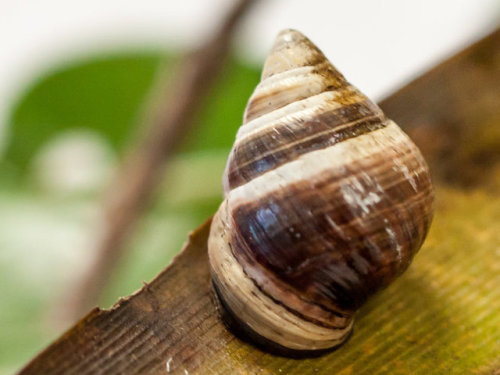
George, the last of his species of Hawaiian land snail, died on New Year’s Day. He was approximately 14 years old.
His death was confirmed by Hawaii’s Department of Land and Natural Resources.
George was born as part of a last-ditch effort to save his species. Back in 1997, the last 10 known Achatinella apexfulva were brought into a University of Hawaii lab to try to increase their numbers. Some offspring resulted, but all of them died – except for George.
As the last remaining A. apexfulva, George lived out his days alone in a cage at DLNR’s snail lab in Kailua, Oahu, alongside 30 other species close to extinction.
Those who knew George say he kept to himself.
“For a snail he was a little bit of a hermit,” David Sischo, a wildlife biologist with the Hawaii Invertebrate Program, tells NPR. “I very rarely saw him outside of his shell.”
Sischo said George likely died of old age, as 14 is “up there in snail years.”
George, Reclusive Hawaiian Snail And Last Of His Kind, Dies At 14
Photo: David Sischo/Hawaii Department of Land and Natural Resources
The Dragon myths actually came from dinosaur fossils that Europeans and Asians thought were fire-breathing beasts. So what dinosaurs do you think are the closest to resemble eastern and western Dragons?
There is actually more to that
Dinosaur bones have been interpreted as dragon bones in the past but they may not be the origin of dragon myths themselves
The 4th-century Chinese historian Chang Qu has written of dragon bones found in Wucheng over 2000 years ago
Wucheng is located in the province Sichuan which is famous for its fossils of Jurassic dinosaurs, mainly sauropods
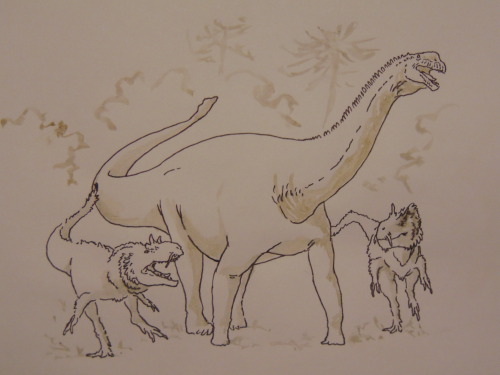
This has simply reinforced “proof” in the existence of dragons for people of this time
In Europe however the likelihood of coming across dinosaur bones seems lower, while it is more likely to come across the bones of Pleistocene megafauna
People may come across the skull of a woolly rhinoceros and, not being familiar with these in modern European view exotic animals, interpret them as something monstrous

A fountain sculpture of the lindwurm of Klagenfurt has been inspired by one such skull
The rhinoceros skull which has been found in 1335 has been interpreted as the lindwurm which is slain in Klagenfurt’s founding tale and has served as base for the sculpture in 1583
Its true origin hasn’t been revealed until 1840
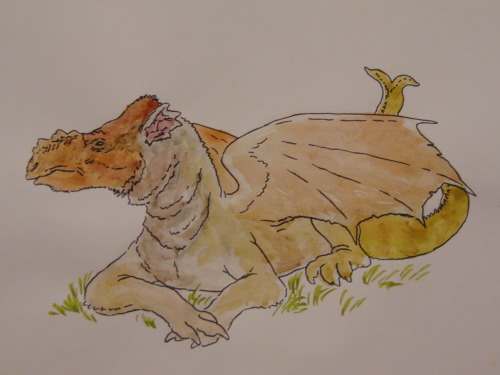
The true origin of dragons however may lie within human psychology
As anthropologist David E. Jones writes in his book “An Instinct for Dragons”, the belief in dragons is so widespread among cultures of ancient history that their origin may lie within our own evolution
An among monkeys deeply rooted common fear of animals such as snakes, big cats, elephants and birds of prey may be the origin of our image of dragons and in fact snakes especially seem to be the design base of dragons in most cultures

The instinctive fear of these animals which were regular threats in the daily life of our ancestors has morphed into the dragons of folklore
A powerful creature that may be feared or worshipped by mankind and to this day stays relevant in our culture from novels to games
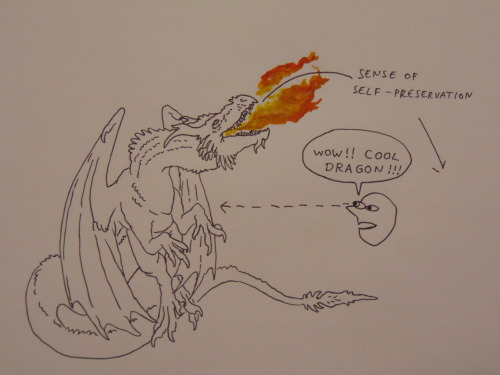
All this may in the end explain why it’s actually rather difficult to pinpoint which dinosaurs resemble dragons the most
Popular picks are Pachycephalosaurus as the ontogenetical variant “Dracorex” or the scansoriopterygid Yi, although the status of its patagia is debatable
These however resemble more modern depictions of dragons which themselves have been inspired by modern depictions of dinosaurs as pointed out in this post by @suicunesrider: http://suicunesrider.tumblr.com/post/177332621980/i-appreciate-how-as-our-understanding-of-dinosaur
Dragons in classic depictions are usually blends of serpentine and mammalian features and thus barely resemble any dinosaur if at all
But as one group of animals which have blended into the dragon stew are birds of prey I may say the dinosaurs resembling dragons the most are the ones that aided in their creation
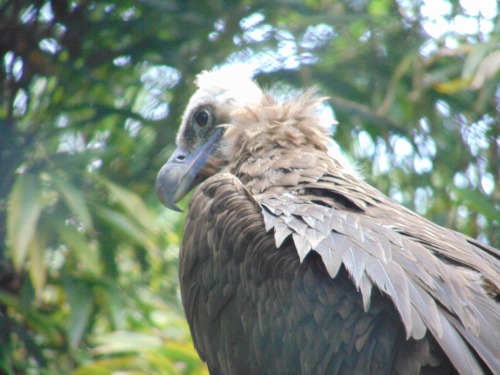
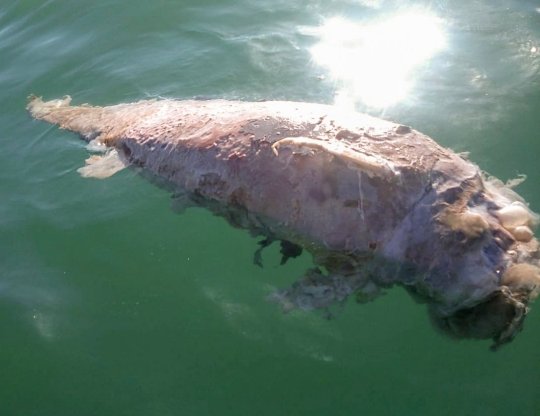
Mexican authorities have announced plans to save the vaquita porpoise after an official report found just 10 of the elusive creatures remain. The environment department said it would mark out a reserve for the planet’s most endangered marine mammal, while also boosting the local economy. But with the vaquita now on a “final countdown to extinction”, conservationists warned that such efforts were too late to save the porpoise. A recent report by the International Committee for the Recovery of the Vaquita (CIRVA) concluded there were just a handful of the animals left in the Gulf of California, their final refuge. True numbers may in fact be even lower than their estimate, as the campaign group Sea Shepherd has since announced the discovery of a body they believe to be a vaquita trapped in an illegal net.
Ten left. Better late than never but could this not have happened sooner?
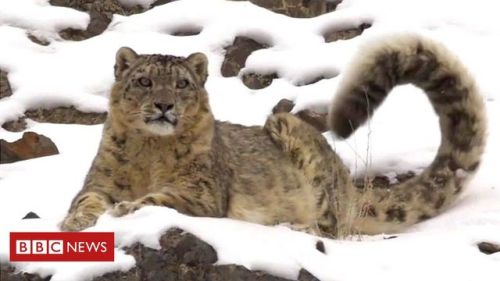
Saving snow leopards from mining giants
A woman from Mongolia has won a prestigious environment award after successfully campaigning to stop mining firms destroying a critical habitat for snow leopards.
Bayarjargal Agvaantseren persuaded her government to create a huge nature reserve in the South Gobi Desert and cancel 37 mining contracts in the area.
y'all ever reach the end of google

My Thereputic talk ,
Y'guys I left Instagram and joined Pinterest and Tumblr now my life feels asthetic surrounded by pretty pictures and weird shower thought all around the globe .
"Vanishing Homeland"
2024

Palestine Mountain Gazelle (Gazella gazella)
A Palestine Mountain Gazelle surveys the ravages of colonialism on its habitat.
.
The myth that Israeli settlers are indigenous to the land of Palestine is absurd on many fronts, among them being their mistreatment of that same land they claim to belong to. For starters, the state of Israel is highly dependant on and contributing to the military industrial complex, one of the most oppressive and polluting entities on the planet. They're also famous (or rather, infamous) for uprooting and destroying native crops and trees and replacing them with invasive plants that not only require more water to tend, but that are also more susceptible to fires. In attempts to greenwash their occupation, they raze Palestinian villages and neighborhoods and build natural parks and reserves on top of them, thus continuing on with a centuries-old colonial practice that has been put to use on stolen lands everywhere. And just like the US-Mexico border wall on my side of the world, the equally racist Apartheid Wall on the West Bank divides up the landscape and severely impedes the free movement of both people and wildlife. The list goes on.
I guess the ecological impact of the current genocidal aggression on Gaza will not be fully apparent until the smoke clears. But already we do know that the first months of the bombing released more emissions than 20 climate vulnerable nations do in a year...so there's that.
All this to say that for people that are so zealous of their supposed "rights" to the land, Israeli Zionists really do seem to go out of their way to hurt it...to carve it up...to destroy it. And that's what colonizers, anytime, everywhere, do.
A ton of incredible species are outright ignored and left to die in the mess we create, very common with invertebrates sadly. Just because an animal may not be the cutest or the cuddliest doesnt mean they shouldnt be protected, as often times these invertebrates are sources of food for other species that people tend to notice more. All animals need conservation because usually we dont realize just how amazing they are until they are gone.

Okay, I know people as a general rule tend to not care about invertebrates as much as cute, fuzzy mammals, but this is a must-read if you care about animal welfare. The short version is that horseshoe crab blood has been used for decades in medicine as a way to test whether something is truly sterile; the blood clots in the presence of bacteria. Since then millions of horseshoe crabs have been captured and drained of blood, even though a synthetic alternative was developed a few years ago.
They go through a pretty brutal experience in the process. They're caught by fishermen who often throw them by their tails into a pile in the open air, and they're then trucked to a bleeding facility where they're strapped down and their blood is removed with needles jabbed directly into their hearts. Over half their blood may be taken, after which they're supposed to be returned to the ocean. However, it's likely many of them never make it back, instead turned into fish bait and sold by the same fishermen who caught them in the first place.
Apart from the fact that this is a horrific thing to put any animal through, the attrition due to fatalities has put a serious dent in horseshoe crab numbers. This is compounded by massive habitat loss, pollution, and the capture of horseshoe crabs as food, particularly as the females of one species are considered a delicacy. And other animals that rely on horseshoe crabs are suffering, too. The American rufa subspecies of the red knot, a medium-sized shorebird, is critically endangered as the horseshoe crab eggs it must have in order to successfully complete migration have become increasingly scarce, and it is likely the bird will become extinct if trends continue.
While there are guidelines for medical horseshoe crab harvest, they're considered optional. The few laws that exist are poorly enforced. Short of a complete ban on horseshoe crab blood in favor of the synthetic alternative, these animals are in very real danger of going extinct after a history spanning over 400 million years on this planet.
Thankfully, this article is not the first to bring forth the issues surrounding horseshoe crab harvest. Here are a few resources for further information and action (US based, though horseshoe crabs are threatened throughout their entire range):
Horseshoe Crab Conservation Network - https://horseshoecrab.org/conservation/
Wetlands Institute - https://wetlandsinstitute.org/conservation/horseshoe-crab-conservation/
Horseshoe Crab Recovery Coalition - https://hscrabrecovery.org/

Medium in Kent Mid-sized farmhouse sunroom design idea

The Raven
Photo by @idee-montijo | Kilimanjaro National Park, 2013. I really like how the natural light picks up an iridescent blue in the raven's black feathers. We all bear a beautiful light, even in our darkest features.
Live that expedition life with Idee Explores - Idee is an expedition photographer documenting discovery and field science with a focus on conservation and sustainability. Find her portfolios here.
Hey. You.
Check out this weird fish.

Cool, huh? It's got no bones and it's older than T rex. Wanna learn more? Check out Consider Nature:


Studio - Home Office Inspiration for a small contemporary built-in desk with yellow walls, a wood stove, and a metal fireplace in a home studio with a gray ceiling and wall paneling.
“The great opportunity is where you are. Do not despise your own place and hour. Every place is under the stars, every place is the center of the world.”
—John Burroughs

Victorian Entry Example of a mid-sized ornate foyer design

I’ve belonged to the Sierra Club & other environmental organizations for 40+ years & led more than 70 week-long service projects & backpacking trips in national parks. You might say I’m a tree hugger! Or maybe a yucca & creosote hugger since most of my activities have been in the Texas Trans-Pecos 😀
When I was in vet school I went to this one lecture that I will never forget. Various clubs would have different guest lecturers come in to talk about relevant topics and since I was in the Wildlife Disease Association club I naturally attended all the wildlife and conservation discussions. Well on this particular occasion, the speakers started off telling us they had been working on a project involving the conservation of lemurs in Madagascar. Lemurs exist only in Madagascar, and they are in real trouble; they’re considered the most endangered group of mammals on Earth. This team of veterinarians was initially assembled to address threats to lemur health and work on conservation solutions to try and save as many lemur species from extinction as possible. As they explored the most present dangers to lemurs they found that although habitat loss was the primary problem for these vulnerable animals, predation by humans was a significant cause of losses as well. The vets realized it was crucial for the hunting of lemurs by native people to stop, but of course this is not so simple a problem.
The local Malagasy people are dealing with extreme poverty and food insecurity, with nearly half of children under five years old suffering from chronic malnutrition. The local people have always subsisted on hunting wildlife for food, and as Madagascar’s wildlife population declines, the people who rely on so-called bushmeat to survive are struggling more and more. People are literally starving.
Our conservation team thought about this a lot. They had initially intended to focus efforts on education but came to understand that this is not an issue arising from a lack of knowledge. For these people it is a question of survival. It doesn’t matter how many times a foreigner tells you not to eat an animal you’ve hunted your entire life, if your child is starving you are going to do everything in your power to keep your family alive.
So the vets changed course. Rather than focus efforts on simply teaching people about lemurs, they decided to try and use veterinary medicine to reduce the underlying issue of food insecurity. They supposed that if a reliable protein source could be introduced for the people who needed it, the dependence on meat from wildlife would greatly decrease. So they got to work establishing new flocks of chickens in the most at-risk communities, and also initiated an aggressive vaccination program for Newcastle disease (an infectious illness of poultry that is of particular concern in this area). They worked with over 600 households to ensure appropriate husbandry and vaccination for every flock, and soon found these communities were being transformed by the introduction of a steady protein source. Families with a healthy flock of chickens were far less likely to hunt wild animals like lemurs, and fewer kids went hungry. Thats what we call a win-win situation.
This chicken vaccine program became just one small part of an amazing conservation outreach initiative in Madagascar that puts local people at the center of everything they do. Helping these vulnerable communities of people helps similarly vulnerable wildlife, always. If we go into a country guns-blazing with that fire for conservation in our hearts and a plan to save native animals, we simply cannot ignore the humans who live around them. Doing so is counterintuitive to creating an effective plan because whether we recognize it or not, humans and animals are inextricably linked in many ways. A true conservation success story is one that doesn’t leave needy humans in its wake, and that is why I think this particular story has stuck with me for so long.
(Source 1)
(Source 2- cool video exploring this initiative from some folks involved)
(Source 3)
Save the tigers!!!






Wild tiger numbers are at an all-time low. We have lost 97% of wild tigers in just over a century. Tigers may be one of the most revered animals, but they are also vulnerable to extinction. As few as 3,200 exist in the wild today.
The largest of all big cats, tigers rely primarily on sight and sound rather than smell. They typically hunt alone and stalk prey. A tiger can consume up to 88 pounds of meat at one time. On average, tigers give birth to 2-3 cubs every 2-2.5 years. If all the cubs in one litter die, a second litter may be produced within 5 months.
Tigers generally gain independence at two years of age and attain sexual maturity at 3-4 years for females and at 4-5 years for males. Juvenile mortality is high however—about half of all cubs do not survive more than two years. Tigers have been known to reach the age of 26 years in the wild.
Across their range, tigers face unrelenting pressure from poaching, retaliatory killings and habitat loss. They are forced to compete for space with dense and often growing human populations.
For the month of March, giraffeinatree will be doing something about it. The tiger (Panthera tigris) is this month’s Animal of the Month. Learn more about this project by clicking here. In the mean time, you can help by donating via Paypal, causevox, fundly, or fundraiser where I have started fundraising campaigns for tiger conservation. If you are otherwise unable to give monetary support at the moment and you would still like to help the cause, you can share the aforementioned links along with this post to any social media site (free). Sharing can do as much—if not more—for the cause as donating, so I encourage you to please go ahead and tell all your friends about it!
All proceeds will go to the Save the Tiger Fund-Panthera partnership conservation program. Learn more about them and what they do with the money they receive here.
(1, 2, 3, 4, 5, 6)
Snakes are awesome

This is another info graphic I did advocating for snakes. When spring comes around snakes start to come out of hibernation and sometimes will end up in people’s backyards. Snakes around this time are killed left and right, whether it is completely harmless or venomous. I want to urge people to learn about snakes and also to leave snakes alone!